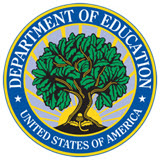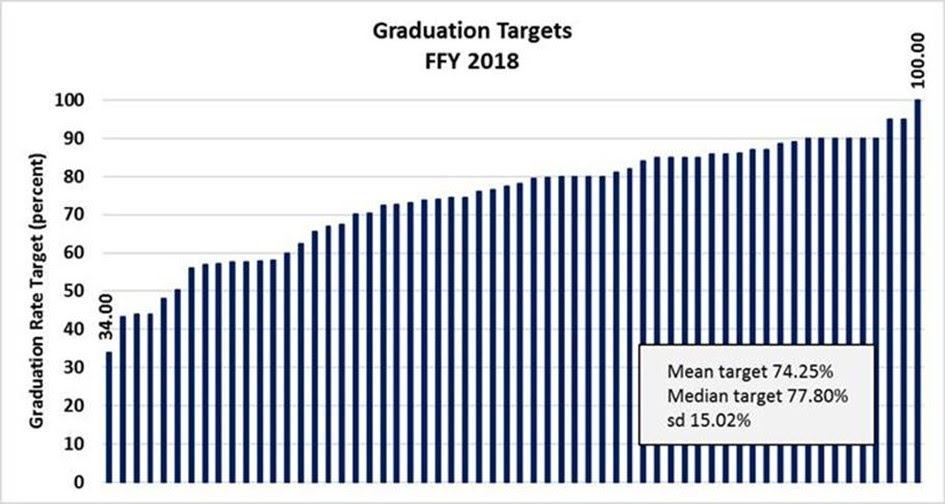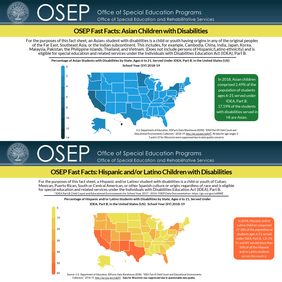Message From Director Laurie VanderPloeg

Hello, Stakeholders.
As we anticipate 2021, it is important to acknowledge the impact of 2020’s realities. National social unrest and the impact of the COVID-19 pandemic have taken their toll on the populations we serve. However, because of your extraordinary efforts, we have met and tackled the challenges head on. Infants, toddlers, children and youth with disabilities, and their families have been supported through increased communication, collaboration, resource development, dissemination, and use of innovative practices.
One key to continued progress in the face of adversity, is the presence of effective personnel. As such, OSEP continues its focus on attracting, preparing, and retaining effective personnel. We have collected information, data, and research on the impact of the personnel shortage issue. Now it is time for implementation and capacity building across the nation of the identified practices that we know are making a difference. To jumpstart this phase of the work, OSEP convened five focus groups with key stakeholders in December to identify critical components for success that will be included in a strong implementation plan. OSEP will convene an additional focus group in January. Your voices and the practices you have identified have been invaluable as OSEP plans for the next phases.
During my time in OSEP we collaborated to write the newest chapter in OSEP’s history book. You all are named in that chapter, acknowledged for your work and most importantly the impact and imprint you are leaving during this historic time. We will be able to look back and say we weathered that storm and we made a difference. What a difference we have made! Let us move into 2021 with the same passion and commitment with which we are ending 2020. There will always be more work to accomplish and more needs to fill. OSEP is here to partner with you in this effort!
A special thank you to the teachers, providers, administrators, all school personnel for your hard work, commitment, and dedication to providing quality instruction, and social, emotional, and behavioral support for ALL children and parents within your systems.
As you go into the holiday season, rest, relax, enjoy family and friends, and most importantly stay safe and stay healthy!
Happy Holidays!
Laurie
|



IDEA Topics in the Current COVID-19 Environment
IDEA topics in the Current COVID-19 Environment
You can also find these and other resources on the IDEA COVID-19 page.
|
Office of Elementary and Secondary Education (OESE)
This Equity by Design Research Brief by the Region III Midwest and Plains Equity Assistance Center (MAP Center) presents a qualitative study of Black and Latinx parents of students with disabilities who experienced conflicts with charter schools. The purpose of the study was to understand the mechanism that generated and sustained the conflict. Understanding this conflict can provide guidance for charter schools, and parents seeking school options so that students of Color with disabilities experience inclusive quality services in any school option.
This edition of Equity Digest by the Region III Midwest and Plains Equity Assistance Center (MAP Center) is a call to action for school community stakeholders to work alongside minoritized students and families as they experience compounding inequities during the COVID-19 pandemic. They discuss inequities related to online/distance learning, and how schools and school communities can serve as resources and supports for minoritized students.


CDC Guidance for Child Care, Schools, and Youth Programs
The Centers for Disease Control and Prevention maintains a web page that provides information for child care, schools, and youth programs to plan, prepare, and respond to COVID-19. Topics include:
- If you're open
- Deciding to open
- Ongoing mitigation strategy
- Prevention and support
- Communication resources
|

Did You Know?
In FFY 2018, states’ FFY 2018 graduation rate targets for Indicator B1 on the State Performance Plan/ Annual Progress Report (SPP/ APR) ranged from 34.00% to 100.00%. The average state target was 74.25%; the median target was 77.80% and the standard deviation was 15.02%.
|
 
Source: FFY 2018 Part B Indicator Analysis, Indicator B1: Graduation Rate, Completed by the National Technical Assistance Center on Transition (NTACT)
Every year, in collaboration with the National Technical Assistance Center on Transition (NTACT), National Center on Educational Outcomes (NCEO), IDEA Data Center (IDC), National Center for Systemic Improvement (NCSI), Early Childhood Technical Assistance Center (ECTA), Parent Centers and the Center for Appropriate Dispute Resolution in Special Education (CADRE), the Office of Special Education Programs (OSEP) publishes an Indicator Analysis of the State Performance Plan/Annual Performance Report (SPP/APR) for Part B and Part C. These analyses contain federal fiscal year indicator measures, data sources for reporting, variations in state and entity approaches to the reported federal fiscal year’s data collection or measurement, and other overview characteristics. Check out this years' publications at OSEP's SPP/APR Resources for Grantees for more data and insights.


OSEP Releases Fast Facts on Asian, Hispanic and/or Latino Children with Disabilities
OSEP is excited to release two new Fast Facts that take a closer look at our IDEA 618 data on race and ethnicity.
For our Asian Children with Disabilities and Hispanic and/or Latino Children with Disabilities Fast Facts we present data from the data collectihttps://sites.ed.gov/idea/osep-fast-facts-highlight-asian-hispanic-latino-children-disabilities/ons authorized under IDEA Section 618 including that collected through child count, educational environments, discipline and exiting data collections.
Infographics’ Highlights
- In 2018, Hispanic and/or Latino children comprised 27.18% of the population of students ages 6–21 served under IDEA, Part B. California, Texas, Florida and New York served more than 50% of all the Hispanic and/or Latino students across the country.
- In 2018, Asian children comprised 2.49% of the population of students ages 6–21 served under IDEA, Part B.
- Between SY 2009–10 and 2018–19, the percentage of Hispanic and/or Latino Students with Disabilities served under IDEA, part B increased from 21.76% to 27.18%.
- In school year 2018–19, Hispanic and/or Latino students were more likely to be identified with specific learning disability and less likely to be identified with other health impairment than all students with disabilities.
- In school year 2018–19, Asian students are more likely to be identified with a speech or language impairment and Autism and less likely to be identified with specific learning disability than all students with disabilities.
- In school year 2017–18, Asian children with disabilities, ages 14–21, exiting school were more likely to graduate and less likely to drop out than all students with disabilities.
OSEP recently released two other Fast Facts on race and ethnicity, American Indian or Alaska Native Children with Disabilities and Black or African American Children with Disabilities. Together, these Fast Facts represent four of the seven Federal race/ethnicity reporting categories used under IDEA.
OSEP Fast Facts is an ongoing effort to display data from the 12 data collections authorized under IDEA Section 618 into graphic, visual representations with the intent to present 618 data quickly and clearly.
Visit the OSEP Fast Facts page for existing and future Fast Facts.
|
OSERS’ technical assistance centers are ready to address your questions regarding the IDEA and best practices and alternate models for providing special education and related services, including through distance instruction. The National Center for Systemic Improvement is the primary source for technical assistance resources during the COVID-19 national emergency for IDEA Part B programs. The Early Childhood Technical Assistance Center is the primary source for IDEA Part C programs. For questions pertaining to Part C of IDEA, States should contact their Early Childhood Technical Assistance Center State Contact. For Part B of IDEA, States should contact the National Center for Systemic Improvement.

|

